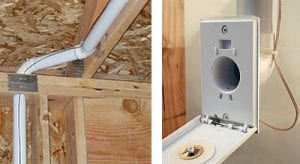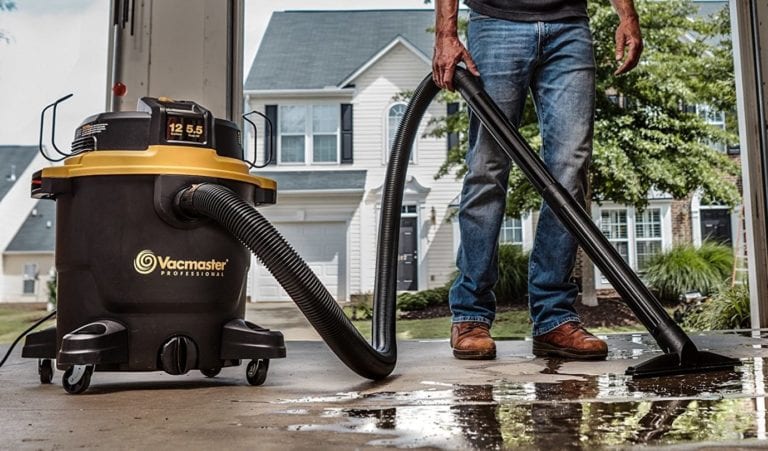Central Vacuum System – What It Is and How It Works
 When you think of vacuum cleaners, what is the first thing which pops up in your mind?
When you think of vacuum cleaners, what is the first thing which pops up in your mind?
According to a wide range of homeowners, they think of it as a weight exercise which tends to produce an incredible amount of noise. But what if we tell you there is a kind of vacuuming technology which, as compared to the traditional vacuum cleaners, is incredibly lightweight and it is also super quiet. Yes, it is none other than the Central Vacuum System.
Central Vacuum System is a simple yet intuitive way of cleaning your house in an easy manner. Devoid of the bulky construction, this unit is designed to make vacuuming easy. Moreover, when it can be installed in new as well as existing homes, it tends to add a real sum to the resale value of your house.
Want to know more about it? Have a look at the below-mentioned guide which incorporates everything which you might need to know about this cleaning appliance.
Components of a Central Vacuum System
There are 4 different components of a Central Vacuum System:
- Power Unit
- Pipes & Inlet Valves
- Lightweight hose
- Vacuum brush
Power Unit

This is the most important component of any vacuum system. It basically consists of a motor along with a separate filter. When a powerful motor is essential for deep cleaning, as it will enhance the suction-ability of the overall vacuum system, the filter comes handy for separating the dirt from debris.
Pipes & Inlet Valves

Nowadays, the manufacturers usually opt for PVC pipes when it comes to installing a central vacuuming system. The main purpose of these pipes is to connect the power unit, which is located in a remote location, to the lightweight hose.
Starting from the main power unit, the pipes split into different parts. Each of these pipes goes into different walls around your home and connects to a separate inlet valve. These valves, as already mentioned, are further connected to the vacuum hoses. Depending on the length of your hose, each inlet valve can cover a considerable amount of cleaning area which can go as high as up to 1000sqft.
Hose
 Available in a wide range of lengths, the hoses of the central vacuum cleaners are incredibly lightweight & extremely flexible. You can work with them for an extended duration of time and they won’t cast any fatigue on your body. Moreover, some of these hoses are also crushproof which means that you can use them for an extended period.
Available in a wide range of lengths, the hoses of the central vacuum cleaners are incredibly lightweight & extremely flexible. You can work with them for an extended duration of time and they won’t cast any fatigue on your body. Moreover, some of these hoses are also crushproof which means that you can use them for an extended period.
As per its working, a hose basically consists of two different ends. One of them gets connected to the inlet valve and the other one is used to suck dirt, debris, and other such accessories.
Nowadays, there are two types of hoses which are available in the market. One of them gets instantly turned on when you connect it with the receptacles so you can start vacuuming straightaway. As per the other type, it is provided with a separate on/off switch.
The hoses are designed in such a way that once you’re done vacuuming, they will be fetched back into the wall-mounted receptacles. Also known as Hide-A-Hose, it is a convenient mechanism for all those homeowners who don’t want to deteriorate the look of their living rooms with a vacuum hose being constantly placed on one side.
Vacuum Brush
 A tool which is connected at one end of the hose, the basic purpose of a vacuum brush is to ensure efficient cleaning. There are two types of vacuum brushes which are commonly used in the Central Vacuum System. When one of them is the Air-driven brush, the other type is an electric brush. Even though the air-driven brushes are the most famous types with a vast majority of customers, you can also choose electric brushes for this purpose.
A tool which is connected at one end of the hose, the basic purpose of a vacuum brush is to ensure efficient cleaning. There are two types of vacuum brushes which are commonly used in the Central Vacuum System. When one of them is the Air-driven brush, the other type is an electric brush. Even though the air-driven brushes are the most famous types with a vast majority of customers, you can also choose electric brushes for this purpose.
Images source: https://builtinvacuum.com
How Central Vacuum System Works
 Incorporating different components, Central Vacuum System provides a comfortable way to clean your home without the heavy workload. This system is basically designed in such a way that you just have to carry a lightweight hose along with a power brush. To vacuum, you just connect the hose with any of the numerous wall-mounted inlets around your home. These inlets are further connected to hidden tubes which are placed inside the walls of your house. Once you vacuum, dust and debris travels through the inlets to the tubes which transport it to a remote location, such as your garage or even the basement.
Incorporating different components, Central Vacuum System provides a comfortable way to clean your home without the heavy workload. This system is basically designed in such a way that you just have to carry a lightweight hose along with a power brush. To vacuum, you just connect the hose with any of the numerous wall-mounted inlets around your home. These inlets are further connected to hidden tubes which are placed inside the walls of your house. Once you vacuum, dust and debris travels through the inlets to the tubes which transport it to a remote location, such as your garage or even the basement.
In a central vacuum system, the permanent power unit is placed permanently outside. It can be your garage, basement or even a utility room. So as far as the homeowner is concerned, you just have to connect the hose with the wall-mounted receptacle and this unit will start working. It’s that easy and that’s what makes this technology stands tall, against the traditional vacuum cleaners, in today’s market.
Types of Central Vacuum System
There are three different types of the Central Vacuum System: Cyclonic Vacuum System, Filter Vacuum System, and bagged Vacuum System. The basic difference between these two types lies in the way in which they separate air from the dirt and debris. So depending on your personal preference, it is imperative to know how one type differs from the other before choosing any one of them for your home.
Cyclonic Vacuum System
The Cyclonic Vacuum System is different in the sense that it is devoid of any kind of bags or filters. In fact, when it comes to separate air from dirt and debris, it makes use of cyclonic separation. In this way, a big proportion (almost 98%) of dirt & debris gets collected into the dirt container. As per the remaining 2%, which are the smaller particles, they normally get vented outside.
The basic advantage of using a central vacuum system is when there are no dirtbags and filters to restrict their air suction-ability, they will always perform to their fullest when it comes to clean your home. You’ll always get the maximum performance out of these units which eventually results in a cleaner home.
One drawback which homeowners usually associate with this particular system is the fact that you’ve to clean the dirt containers by yourself. Even though the cyclonic vacuums systems are 100% dust free when it comes to work inside your home, it is not the case if you’ve to empty their dirt canisters. When the air gets vented outside, this is not an ideal system for all those homeowners who suffer from different kinds of dust allergy.
Filtered Vacuum Systems
As evident from their name, the filtered vacuum systems make use of filters to take care of the dirt and debris which isn’t collected by the dirt container. In this system, no amount of debris gets vented outside. Such a construction makes it convenient to empty the dirt canisters for even those of you who might suffer from dust allergy.
However, you do have to wash or even replace the filters after consistent use or otherwise, it will affect the overall performance of the central vacuum system.
Bagged Vacuum System
The bagged vacuum systems make use of a separate bag, located inside the dirt container, for containing the dirt and debris. Unlike Cyclonic Vacuum systems, there is no need of outside venting with these units which makes it a convenient option for a wide range of customers.
But just like filtered vacuum systems, you’ve to clean or replace the bag after a suitable duration of time for making sure that this unit can perform without any restriction. In addition, if you suffer from dust allergies, you can also use a throwaway bag.
Advantages of Central Vacuum System
With the recent innovations in technology, the price difference between central vacuum system vs portable vacuums has decreased to a certain extent. As a result, more and more people have started to turn towards this appliance for cleaning their homes in a simple yet effective manner. Here are a few advantages which you’ll get after investing in this particular product.
[su_list icon=”icon:check” icon_color=”#218f44″ class=””]
- Dust-free Air
When it comes to Central Vacuum System, it picks up dirt and debris before sending it outwards through the hidden pipes. When its dust container is located in a remote location, it prevents the dirty air from getting recirculated inside your homes.
- Power
Unlike traditional vacuum cleaners, where you’ve to carry the entire equipment with you, the Central Vacuum System makes use of a power unit which is located in a remote location. As a result, it can make use of a much powerful motor, as compared to portable units, without adding weight to this equipment. In fact, the majority of these systems which are available in the market exhibit 3 to 5 times more power than that of their traditional counterparts.
- Lesser Noise
With the power unit located in your garage or basement, Central Vacuum Systems tends to produce a much lesser noise, while working, than traditional vacuums. Even if someone in your home is busy watching TV or doing any other important work, you can use this model without disturbing your family members.
- Easy to Use
All you need to operate a Central Vacuum System is a long hose fitted with a vacuum brush. When this unit is devoid of any kind of electric cords, you don’t have to worry about getting tripped over every now and then. In addition, when the vacuum hose connects with the wall-mounted valves, which are fitted with as per your choice, you can use it wherever you want without any hindrance.
[/su_list]







I really like how you say that a central vacuum doesn’t have an electric cord, so you won’t trip over it. I’m always falling over and struggling with the cord. My husband and I are remodeling a nice home for ourselves and our two toddlers. Having a good way to keep clean is really important for me, so I think that I’ll find someone who’ll install a central vacuum for us.